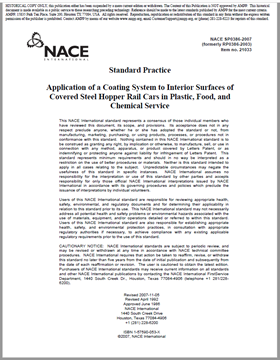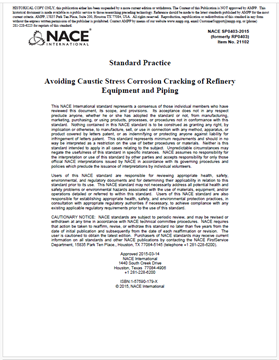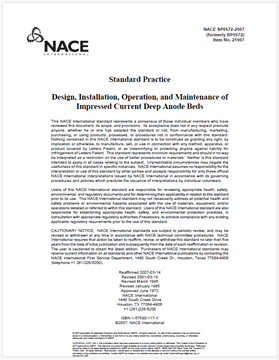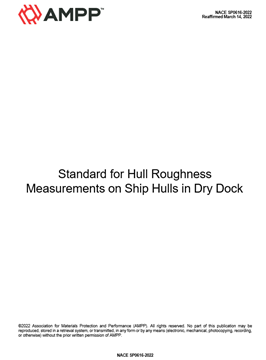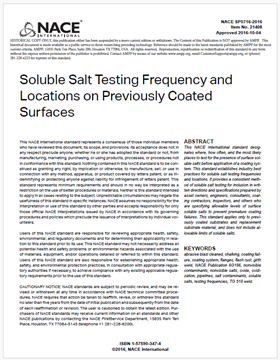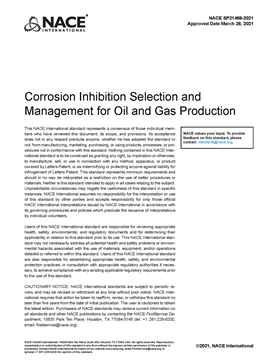Search
Products tagged with 'Standards and Reports'
View as
Sort by
Display
per page
NACE SP0315-2015/IEEE Std 1835-SG, "Standard for Atmospheric (Above Grade) Corrosion Control of Existing Electric Transmission, Distribution, and Substation Structures by Coating Systems"
Product Number:
21188-SG
ISBN:
1-5790-309-1
Publication Date:
2015
$109.00
NACE SP0386-2007 (formerly RP0386), Application of a Coating System to Interior Surfaces of Covered Steel Hopper Railcars in Plastic, Food, and Chemical Service
Product Number:
21033-SG
Publication Date:
2007
$179.00
NACE SP0395-2013 (formerly RP0395), "Fusion-Bonded Epoxy Coating of Steel Reinforcing Bars"
Product Number:
21071-SG
Publication Date:
2013
$179.00
NACE SP0403-2015, Avoiding Caustic Stress Corrosion Cracking of Refinery Equipment and Piping
Product Number:
21102-SG
Publication Date:
2015
$179.00
NACE SP0415-2015/IEEE Std 1895-SG, NACE International and IEEE Joint Standard Practice for Below-Grade Inspection and Assessment of Corrosion on Steel Transmission, Distribution, and Substation Structures
Product Number:
21189-SG
ISBN:
1-57590-311-3
Publication Date:
2015
$109.00
NACE SP0499-2012 "Corrosion Control and Monitoring in Seawater Injection Systems"
Product Number:
21237-SG
Publication Date:
2012
$179.00
NACE SP0572-2007, Design, Installation, Operation, and Maintenance of Impressed Current Deep Anode Beds
Product Number:
21007-SG
Publication Date:
2007
$179.00
NACE SP0592-2006, Application of a Coating System to Interior Surfaces of New and Used Rail Tank Cars in Concentrated (90 to 98%) Sulfuric Acid Service
Product Number:
21057-SG
Publication Date:
2006
$179.00
NACE SP0616-2022, Standard for Hull Roughness Measurements on Ship Hulls in Dry Dock
Product Number:
NACE SP0616-2022
Publication Date:
2022
$109.00
NACE SP0716-2016, Soluble Salt Testing Frequency and Locations on Previously Coated Surfaces
Product Number:
21409-SG
Publication Date:
2016
$179.00
NACE SP21412-2016/SSPC-CPC 1, Corrosion Prevention and Control Planning
Product Number:
21412-SG
ISBN:
1-57590-356-3
Publication Date:
2016
$179.00
NACE SP21469-2021, Corrosion Inhibition Selection and Management for Oil and Gas Production
Product Number:
SP21469-2021
Publication Date:
2021
$109.00


